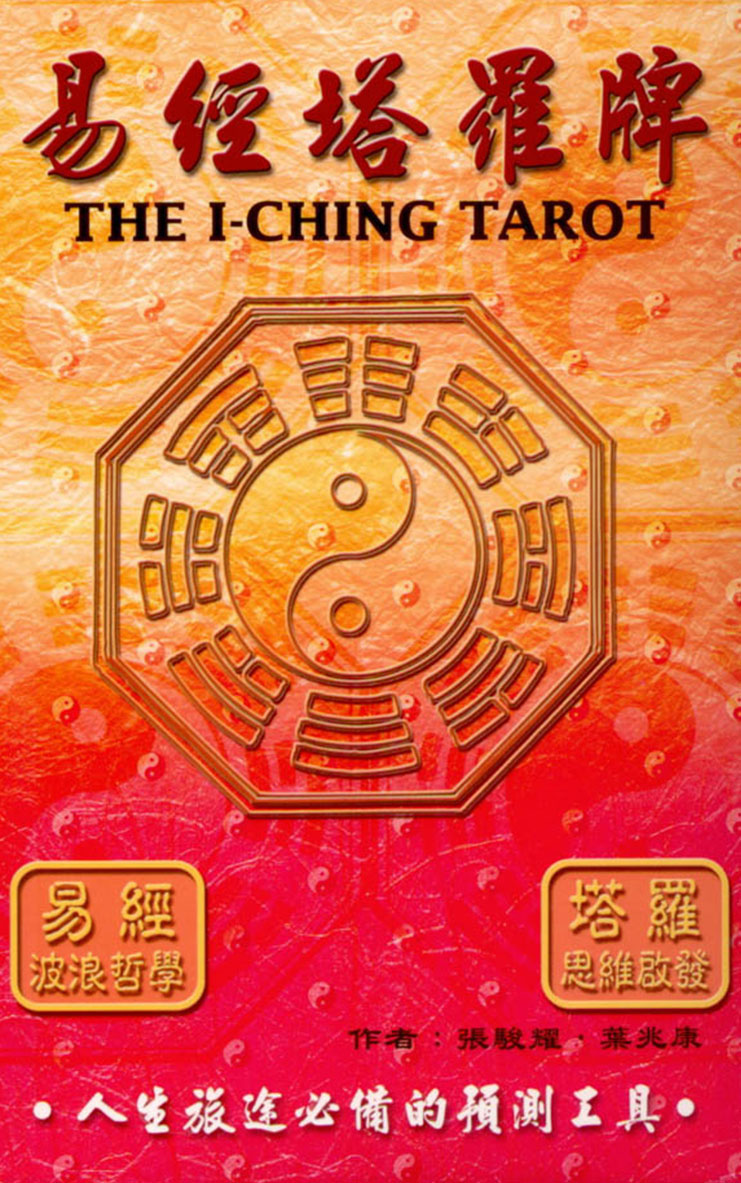About the I-Ching
The I-Ching can probably go on the shelf marked "Oldest Books on Earth". The Chinese character "Yi" (opposite page) is made up of two characters: sun and moon symbolizing the universal law of constant change from night to day, summer to winter, life to death. Because of this, the I-Ching is also called the Book of Change. Its composition was an on-going effort spanning many centuries. It was ancient China's protocol to attribute important inventions and authorships to its emperors. In line with this practice, the authorship of the I-Ching was attributed to Fu His, the legendary ruler of China around 4,000 B.C. It was said he was intrigued by the eight trigrams on the shell of a tortoise he found. These eight trigrams form the backbone of the 64 hexagrams which make up the primary content of the I-Ching. The 64 hexagrams, being individual combinations of lines and dashes, (solid-male or yang; broken-female or yin) represent situations or 'codes' to the world of nature, commerce, politics, family and social affairs which are inextricably tied up with the elemental forces. King Wan of the State of Chau wrote 64 short paragraphs explaining each of the hexagrams. Since then many distinguished philosophers including Confucius have added commentaries. Eventually, the I-Ching as a collection of WISDOM, philosophy, fine poetry, as well as a book of divination, was born. The I-Ching for a long time has been used as a tool for divination, a tool for EXPLORING THE FUTURE. It works by applying the meanings of the images of the hexagrams to predict the future scenario and how to tackle the situation in times of challenge and difficulties. However, the meaning of the hexagrams is often difficult to understand and interpret. In order to make the wisdom of the iching easily accessible to people from all walks of life, for the first time ever the images of the hexagrams are converted into traditional folk art.
CONSULTING THE I-CHING
Confucius - the greatest Chinese philosopher of all time - upheld an open mind, free of prejudices before any learning could take place. An open mind is prerequisite for tapping into the wisdom of this ancient art. The I-Ching does not give a Yes or No answer. As with any psychic advisor, do not let it dictate your actions or run your life. Listen to its suggestions. Be open and the images will put you in touch with your inner-self and thereby guide you to the best course of action to take. The I-Ching guides us to be who we are = "the enlightened one" who is moral, righteous, honest, good and kind to all living things. Hence the advice it gives is of the highest order to put us on the path of greatest personal growth. The I-Ching does not encourage otherwise.
The I-Ching Tarot
The difference between a tarot and other divination systems is that in the tarot its language is visual. It is thus with the I-Ching Tarot. The illustration of a picked card holds the key that unlocks and reveals the answer. Before doing your first consultation, study your I-Ching deck. Look at all 64 pictures. Study each of the images and let your imagination roam. Get to know the meanings of the pictures - and contemplate. Do this so that the energy of your I-Ching deck and your inner-knowing mingles. There will be several images the meanings of which will be immediately obvious. All meanings to images can be looked up at the Interpretation section (Chapter 8) of the Guidebook. The interpretation to each card also gives a quick answer to the most often asked questions i.e. with regard to a wish, an affair of the heart, dispute or sickness. Each picture is in combination with its own set of duo-trigrams (the hexagram) e.g. for hexagram no.31 (courting), the upper trigram is Lake and the lower trigram is Mountain. Apart from interpreting the picture, study the six sets of lines and the two individual symbols. These give detail in regard to people, season (timing), orientation and the nature of the situation in question. Those unfamiliar with the I-Ching may need time to familiarize themselves with these. However, this book is made out so as to walk you through the labyrinth of symbols and meanings without much effort. In time, readings and interpretations will become second nature even to the uninitiated I-Ching enthusiast.
